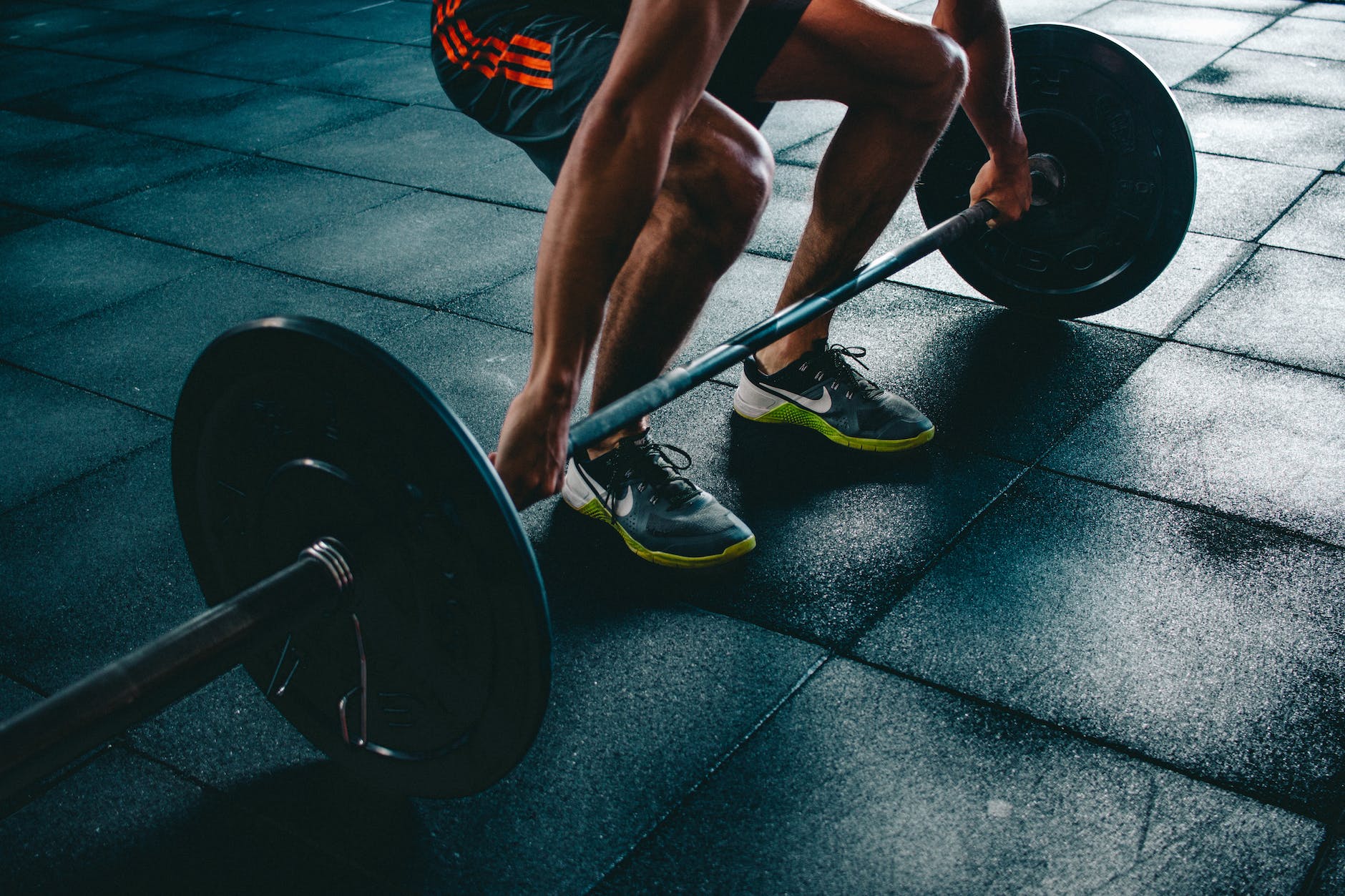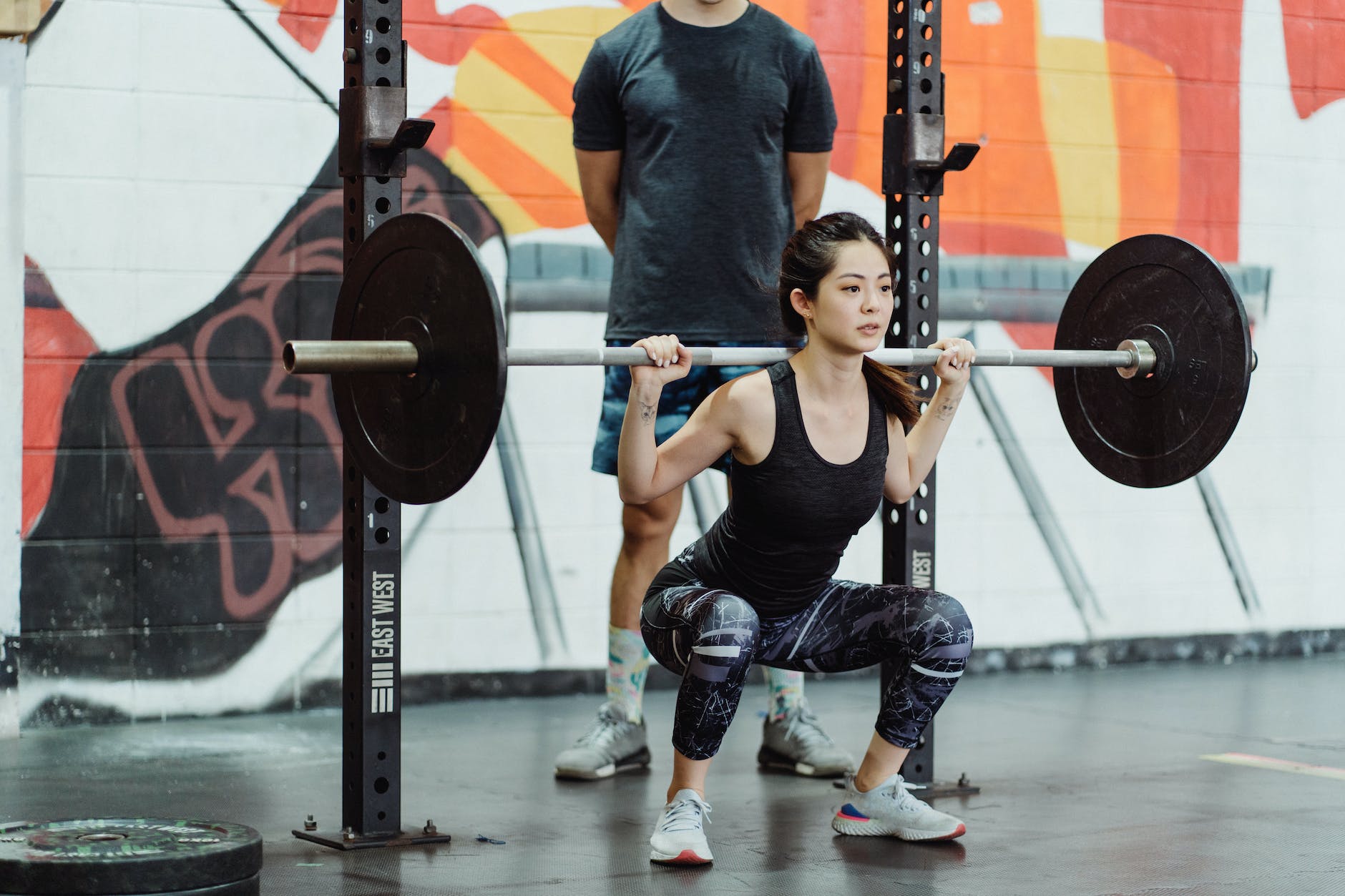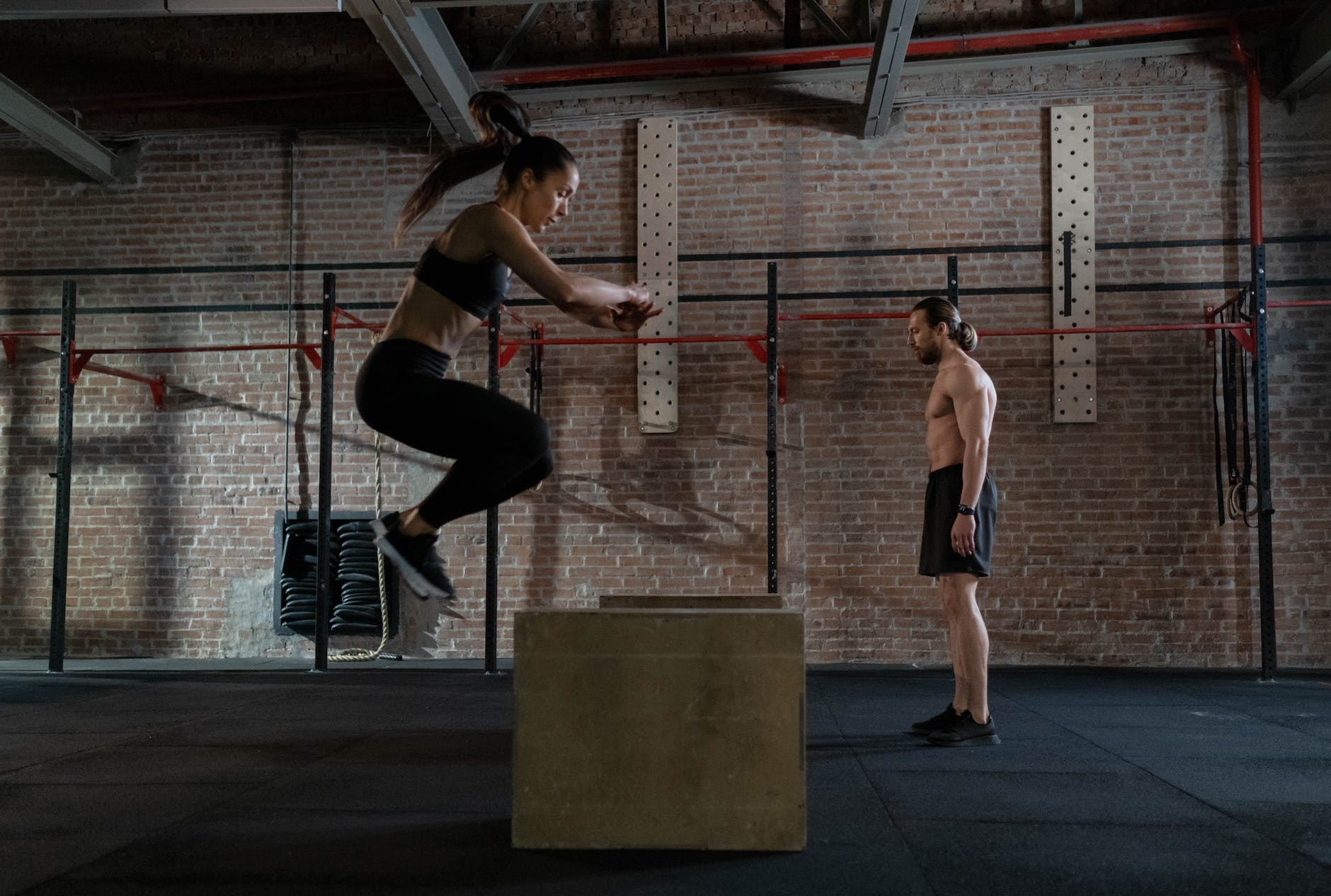Welcome to the world of weightlifting!
In this guide, I’ll break down the basics of weightlifting (often known as Olympic weightlifting) to help you get started.
Whether you’re a complete newbie or just looking to understand weightlifting better, you’ve come to the right place.
Sections:
- Introduction to Weightlifting
- Objectives of Weightlifting
- Rules
- Glossary
- Common Tactics & Strategies
- Skills to be a Successful Athlete in Weightlifting
- Similar Sports to Weightlifting
- Conclusion and FAQs
1. Introduction to Weightlifting
- Weightlifting is a sport where athletes lift a barbell with weight plates from the ground to overhead.
- The two main lifts in weightlifting are the snatch and the clean and jerk.
- Athletes aim to lift the heaviest weights while maintaining proper technique.
2. Objectives of Weightlifting
When it comes to weightlifting, there are several key objectives that athletes aim to achieve. These objectives not only define the essence of the sport but also highlight the diverse set of skills required to excel in it.
Lifting Maximum Weight
One of the primary objectives of weightlifting is to lift the maximum weight possible in each of the two main lifts: the snatch and the clean and jerk. The thrill of weightlifting lies in the challenge of continually pushing your limits and attempting to lift heavier weights with each lift.
This objective reflects the fundamental essence of the sport, as athletes constantly strive to surpass their personal best and achieve new records.
Weightlifting involves a unique blend of explosive power and controlled technique. Athletes must summon their strength and explosiveness to conquer the gravitational force that holds the loaded barbell down. The satisfaction of successfully lifting heavier weights is a major driving force for weightlifters, making this objective a cornerstone of the sport.
Testing Strength, Speed, and Flexibility
Weightlifting serves as a comprehensive test of an athlete’s physical abilities. It requires a harmonious combination of strength, speed, and flexibility. These attributes collectively contribute to the successful execution of the lifts.
Strength: Weightlifters need a solid foundation of strength to lift heavy weights off the ground and propel them overhead. Building muscle power is essential, as it provides the force necessary to overcome the resistance of the barbell and weights. Through consistent training and conditioning, weightlifters develop their muscles to handle substantial loads, enhancing their overall strength.
Speed: Speed is a critical factor in weightlifting, particularly during the explosive phases of the lifts. Athletes must generate rapid force to accelerate the barbell upward. The snatch and the clean and jerk both involve quick and forceful movements that require athletes to generate power in a short amount of time. Speed training helps weightlifters improve their ability to produce force swiftly and efficiently.
Flexibility: Flexibility plays a crucial role in weightlifting, enabling athletes to maintain proper form throughout the lifts. The lifts require a range of motion that engages multiple joints, from the ankles to the shoulders. Flexibility allows weightlifters to achieve the optimal positions required for successful lifts. Regular stretching and mobility exercises contribute to improved flexibility, reducing the risk of injury and enhancing overall performance.
Success Through Total Weight Lifted
In weightlifting competitions, success is determined by the total weight lifted in both the snatch and the clean and jerk.
This cumulative approach emphasizes the importance of consistency and versatility. Athletes must not only excel in a single lift but also demonstrate proficiency in two distinct types of lifts.

While lifting the heaviest possible weight in each individual lift is significant, the final ranking is determined by the combined weight of successful lifts in both the snatch and the clean and jerk. This objective encourages athletes to strategize their attempts, balancing the weights they choose for each lift to achieve the highest possible total.
It’s not just about excelling in a single lift; it’s about achieving a balanced and impressive performance across both lifts.
In conclusion, the objectives of weightlifting encompass lifting maximum weights, testing strength, speed, and flexibility, and striving for success through the total weight lifted.
These objectives provide a comprehensive view of the multifaceted nature of weightlifting as a sport. As you embark on your weightlifting journey, keep these objectives in mind as they shape the goals and achievements that you’ll pursue in this dynamic and exhilarating discipline.
Objectives of Olympic Weightlifting
Olympic weightlifting, also known as weightlifting, follows a set of objectives that define the essence of the sport.
At its core, Olympic weightlifting aims to showcase the incredible physical prowess of athletes by challenging them to lift maximum weights with precision and power.
The primary objective revolves around lifting the heaviest weight possible in two distinct lifts: the snatch and the clean and jerk. This pursuit of lifting heavier weights not only demonstrates an athlete’s raw strength but also highlights their ability to harness explosive speed and maintain flexibility.
Olympic weightlifting serves as a test of overall athleticism, requiring a harmonious blend of strength, speed, and flexibility. The sport’s unique combination of physical attributes sets it apart and makes each lift a remarkable feat of human capability.
Additionally, success in Olympic weightlifting is determined by the cumulative weight lifted in both lifts, emphasizing a strategic and balanced approach to competition.
This objective encourages athletes to excel in various aspects of the sport, contributing to their growth as well-rounded weightlifters. In essence, the objectives of Olympic weightlifting reflect a pursuit of excellence, pushing athletes to redefine their limits and achieve extraordinary accomplishments.
3. Rules
The rules governing Olympic weightlifting are designed to maintain fairness, safety, and the integrity of the sport.
These regulations create a structured framework within which athletes can compete, pushing their limits while adhering to the principles of proper technique and sportsmanship.
Three Attempts for Maximum Weight
In Olympic weightlifting competitions, athletes are granted three attempts for each of the two lifts: the snatch and the clean and jerk. The objective is to lift the maximum weight possible in each attempt. This three-attempt system provides athletes with the opportunity to progressively challenge themselves and strive for personal bests.
They can choose to increase the weight with each subsequent attempt or maintain the weight if they feel they’ve reached their limit. The strategic decision-making behind selecting the right weights and attempts adds a layer of complexity to the sport, allowing athletes to tailor their approach based on their performance and the competition.
Emphasis on Proper Form
Proper form and technique are of paramount importance in Olympic weightlifting. A lift is only counted as successful if it adheres to specific technical standards. Athletes must execute each phase of the lift with precision and accuracy.
This requirement not only ensures the safety of the lifter but also maintains the integrity of the sport. Judges and officials closely scrutinize each lift to assess whether the lifter has met the necessary technical criteria. Proper form involves maintaining a straight back, extending the hips and knees in a synchronized manner, and locking out the arms overhead.
Any deviation from the prescribed form can lead to the disqualification of the lift, even if the weight is successfully lifted, emphasizing the significance of mastery over the lift’s technique.
Judges and Fair Evaluation
Weightlifting competitions involve a panel of judges who assess and evaluate each lift based on strict criteria. These judges ensure that lifts are executed according to the rules and regulations of the sport.
They look for cues such as proper form, the barbell reaching a stationary position overhead, and the lifter demonstrating control before lowering the weight. The presence of judges guarantees an objective evaluation and maintains a level playing field for all athletes.
In cases where there is uncertainty or disagreement among the judges, video replay technology may be used to make accurate judgments. This commitment to fair assessment underscores the importance of maintaining the credibility and authenticity of Olympic weightlifting competitions.

In conclusion, the rules of Olympic weightlifting provide a clear structure for competition, emphasizing proper technique, strategic decision-making, and fair evaluation. These rules not only promote the safety and integrity of the sport but also showcase the dedication and skill of athletes as they strive to achieve remarkable feats of strength and precision.
BTW… If you want to know more about different sports, take a look at the page All Sports Explained.
4. Glossary
- Snatch: A lift where the barbell is raised from the ground to overhead in one motion.
- Clean and Jerk: A lift involving two motions: lifting the barbell to the shoulders (clean) and then overhead (jerk).
- Barbell: The long metal bar athletes lift, which holds the weight plates.
- Ground: The starting point of the lift where the lifter picks up the barbell.
- Overhead: The position above the lifter’s head where the barbell is fully extended.
- Grip: The way an athlete holds the barbell, influencing control and technique.
- Extension: Fully straightening the hips, knees, and arms during a lift.
- Shoulders: The upper body part where the barbell rests in the clean and jerk.
- Jerk: The second phase of the clean and jerk, pushing the barbell overhead.
- Form: The correct technique and body position during a lift to ensure success.
- Lockout: Fully extending the arms and holding the barbell motionless overhead.
- Plate: Disc-shaped weights added to the barbell to increase the overall load.
- Rack Position: Holding the barbell on the shoulders after the clean phase.
- Wide-Grip: Holding the barbell with hands spread wider apart, as in the snatch.
- Clean: The first phase of the clean and jerk, lifting the barbell to the shoulders.
- Lockout: Fully extending the arms and holding the barbell motionless overhead.
5. Common Tactics & Strategies
Successful Olympic weightlifting involves more than just raw strength; it requires careful planning, strategic decision-making, and a focus on overall performance optimization.
Here are some common tactics and strategies that weightlifters employ to excel in their sport:
Strategic Lift Planning
Athletes strategically plan their lifts based on their individual strengths and weaknesses. They analyze their training data and past performances to determine the optimal weights for their attempts.
By selecting weights that challenge them without risking failure, weightlifters maximize their chances of lifting successfully. This planning process involves considering the progression of weights for each lift, aiming to set personal records and accumulate points for their total.
Weight Selection
Choosing the right weights for each attempt is a delicate balance between pushing limits and ensuring successful lifts.
Athletes often start with a weight that is comfortably manageable to establish a solid foundation. Subsequent attempts are progressively heavier as weightlifters aim to set new personal bests. Selecting weights too light may result in missed opportunities, while weights that are too heavy can lead to failed lifts and wasted energy.
Effective weight selection requires a deep understanding of one’s capabilities and the ability to adapt to the circumstances of the competition.
Strategic Rest and Recovery
Rest and recovery play a pivotal role in maintaining peak performance throughout weightlifting competitions. Athletes must manage their energy levels and avoid overexertion, especially during multi-attempt events like the snatch and the clean and jerk.
Between lifts, weightlifters strategically time their rest to ensure they are physically and mentally prepared for their next attempt.
Proper hydration and nutrition also contribute to sustained energy levels and optimal performance throughout the competition.
Table: Tactics & Strategies in Olympic Weightlifting
| Tactic/Strategy | Description |
|---|---|
| Strategic Lift Planning | Athletes plan attempts based on strengths, aiming to set personal records and accumulate points. |
| Weight Selection | Choosing appropriate weights for each attempt balances challenge and success. |
| Strategic Rest and Recovery | Effective timing of rest and recovery ensures sustained energy and optimal performance. |
In conclusion, Olympic weightlifting involves a meticulous interplay of tactics and strategies that extend beyond mere physical strength. Athletes carefully plan their lifts, select weights that challenge them without overwhelming them, and strategically manage their rest and recovery.
The ability to effectively execute these tactics contributes to the success of weightlifters, helping them achieve remarkable feats and continually push their limits.
6. Skills to be a Successful Athlete in Weightlifting
Becoming a successful athlete in Olympic weightlifting demands a combination of physical prowess, mental focus, and technical finesse.
To excel in this dynamic and challenging sport, athletes must cultivate a diverse set of skills that encompass strength, speed, technique, and mental fortitude.
Physical Skills:
Strength
Strength is the foundation of weightlifting. Athletes must develop substantial muscle power to lift heavier weights off the ground and propel them overhead. Building strength requires consistent and targeted training that focuses on different muscle groups, including the core, legs, back, and shoulders.
Progressive resistance training, such as squats and deadlifts, forms the backbone of strength development, enabling weightlifters to handle increasingly heavy loads with confidence.
Speed
Swift and explosive movements are essential in both the snatch and the clean and jerk. Athletes must generate rapid force to accelerate the barbell upward.
Speed training involves exercises that enhance fast-twitch muscle fibers, enabling weightlifters to generate power in a short amount of time.

Plyometric exercises, such as box jumps and medicine ball throws, help improve explosiveness and overall speed, contributing to the dynamic execution of each lift.
Technique
Technique is a critical skill that distinguishes successful weightlifters. Precise form not only prevents injuries but also ensures that lifts are valid and judges’ criteria are met.
Athletes must master the intricacies of each phase of the snatch and the clean and jerk, focusing on aspects such as grip, posture, hip extension, and overhead lockout. Diligent practice under the guidance of experienced coaches is essential for refining technique and maintaining consistency in execution.
Mental Skills:
Focus and Concentration
Weightlifting demands intense focus and concentration. Athletes must block out distractions and maintain a clear mental state to execute lifts with precision.
Developing the ability to tune in to the task at hand and shut out external factors is crucial for achieving successful lifts, especially when facing heavy weights and high-stakes competitions.
Confidence
Confidence plays a vital role in weightlifting performance.
Believing in one’s abilities and trusting the training process fosters a positive mindset that enhances performance under pressure. Athletes who approach the barbell with confidence are more likely to execute lifts with determination and overcome challenges, ultimately contributing to successful outcomes.
Resilience
Weightlifting is marked by its ups and downs, and resilience is key to overcoming setbacks.
Athletes face failures, missed lifts, and plateaus in their training journey. Developing resilience allows weightlifters to bounce back from disappointments, learn from mistakes, and persevere in their pursuit of progress and improvement.
Visualization
Visualization involves mentally rehearsing successful lifts before executing them physically. This technique enhances muscle memory, reduces anxiety, and boosts confidence. Athletes visualize each step of the lift, from gripping the barbell to completing the extension, fostering a strong mind-body connection that contributes to optimal performance.
In summary, becoming a successful weightlifter requires a well-rounded set of physical and mental skills. While strength, speed, and technique form the foundation of physical prowess, focus, confidence, resilience, and visualization contribute to mental strength. Cultivating these skills in harmony allows athletes to tackle the challenges of weightlifting with confidence and achieve remarkable feats of strength and technique.
Conclusion and FAQs
In conclusion, weightlifting is an exciting sport that combines strength, speed, and technique. By understanding its basics, you can appreciate the incredible feats of athletes who compete in this discipline.
1. How to start Olympic weightlifting?
To start Olympic weightlifting, seek guidance from a certified coach or training facility. Learn proper techniques gradually, focusing on lifts like the snatch and clean and jerk. Prioritize safety and form as you progress in weight and complexity.
2. How to combine Olympic weightlifting and powerlifting?
Combining both sports requires careful programming to balance training demands. Consult with experienced coaches to create a structured plan that targets strength, speed, and technique for both Olympic weightlifting and powerlifting movements.
3. How long is an Olympic weightlifting bar?
An Olympic weightlifting bar measures about 7 feet (2.2 meters) in length and typically weighs 20 kilograms (44 pounds) for men and 15 kilograms (33 pounds) for women.
4. How many calories does weightlifting burn?
The calorie burn from weightlifting varies based on factors like intensity, duration, and body weight. On average, weightlifting can burn around 200-300 calories per hour.
5. How to wear a weightlifting belt?
Place the weightlifting belt around your lower back and core, just above your hip bones. Tighten it snugly but comfortably to provide support during heavy lifts while allowing room for breathing.
6. How to use weightlifting straps?
Wrap the strap around the barbell and then loop it around your wrist. The strap improves grip for exercises like deadlifts and rows, aiding in lifting heavier weights and reducing strain on the forearm muscles.
7. What are weightlifting belts for?
Weightlifting belts provide core support and stability during heavy lifts by increasing intra-abdominal pressure. They help prevent lower back injuries and support proper posture, especially in compound lifts.
8. How much does a weightlifting bar weigh?
An Olympic weightlifting bar typically weighs 20 kilograms (44 pounds) for men and 15 kilograms (33 pounds) for women. Specialty bars used for specific training may vary in weight.